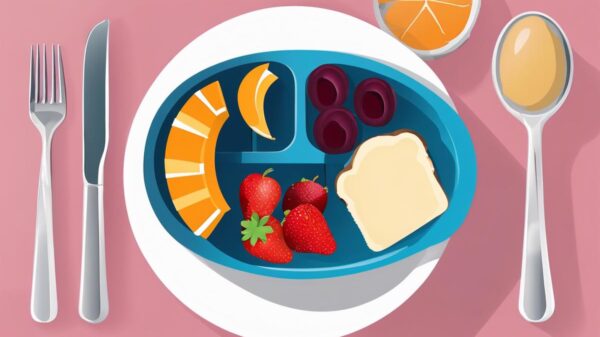How Often Should You Change Your Lunchbox?

The frequency at which you should change your lunchbox depends on various factors, including the material of the lunchbox, how well you maintain it, and how often you use it. Here are some guidelines to help you determine when it’s time for a lunchbox replacement:
Material
The material of your lunchbox plays a significant role in its longevity. Plastic lunchboxes may need replacement more often than those made from stainless steel or high-quality silicone. Plastic can degrade over time, becoming more porous and difficult to clean, which can lead to lingering odors and stains.
Wear and Tear
Inspect your lunchbox regularly for signs of wear and tear. Cracks, deep scratches, or broken hinges can compromise the lunchbox’s ability to seal properly, leading to potential leaks and contamination. If you notice such damage, it may be time for a replacement.
Odor and Stains
If you’ve tried various cleaning methods and still can’t get smells out of a lunchbox or stubborn stains get worse, investing in a new one might be a good idea.
Hygiene
Maintaining proper hygiene is crucial for food safety. If you find it challenging to clean your lunchbox effectively or are concerned about the buildup of harmful bacteria, consider replacing it.
Upgrade
Sometimes, you might simply want to upgrade to a newer lunchbox with improved features, better insulation, or a more appealing design. In such cases, replacing your lunchbox is a matter of preference.

What Smells Can You Not Get Rid Of?
While many common food-related smells can be eliminated with proper cleaning and odor-fighting methods, some odors may be exceptionally challenging or impossible to remove completely from a lunchbox. Here are a few examples:
Fish Odors
The strong, lingering smell of fish can be particularly stubborn. Despite thorough cleaning, the fishy aroma may persist due to the oils and compounds in fish that penetrate lunchbox materials.
Garlic and Onions
Foods like garlic and onions contain sulfur compounds that can leave behind pungent odors. These odors can be difficult to eradicate, even with diligent cleaning.
Spices and Curry
Strong spices and curry dishes can leave lasting scents in your lunchbox. The aromatic compounds in these foods can seep into porous materials, making it challenging to eliminate the smell entirely.
Certain Dairy Products
While you can usually remove the smell of spilled milk, some aged or fermented dairy products, such as certain cheeses, can leave a persistent odor that’s hard to eliminate.
What About The Milk Smell?

A lingering milk smell in your lunchbox can be quite unpleasant, not to mention embarrassing, when you open it in a public place. Whether it’s from a spilled milk container or the remnants of a dairy-based lunch, that unmistakable odor can be challenging to eliminate. Fortunately, you can use several effective methods to banish the milk smell from your lunchbox and enjoy fresh, odor-free meals once again. In this article, we will explore these methods and offer tips for keeping your lunchbox smelling clean and fresh.
Understanding the Milk Smell
Before diving into the solutions, it’s essential to understand why milk leaves such a stubborn odor. Milk contains proteins and fats that can decompose and produce a foul smell when exposed to air. When milk spills or gets trapped in the corners of your lunchbox, it can become a breeding ground for bacteria, exacerbating the odor problem.
Immediate Action
The first step in dealing with a milk smell in your lunchbox is to take immediate action when you notice a spill. If you’ve just had an accident, follow these steps:
- Empty the lunchbox: Remove any remaining food, containers, or utensils from your lunchbox.
- Clean up the spill: Use a paper towel or napkin to soak up as much of the spilled milk as possible. Be sure to get into your lunchbox’s nooks and crannies where milk may have seeped.
- Rinse with cold water: Rinse the interior of your lunchbox with cold water to remove any remaining milk residue.
- Dry thoroughly: After rinsing, dry the lunchbox thoroughly with a clean towel or paper towel. Leaving any moisture behind can promote the growth of bacteria and worsen the smell.
Baking Soda
Baking soda is a versatile and effective odor absorber. It works by neutralizing the acidic compounds responsible for the milk smell. Here’s how to use it:
- Sprinkle baking soda: Sprinkle a generous amount of baking soda inside your dry lunchbox. Pay extra attention to areas where the milk may have spilled.
- Close the lunchbox: Seal the lunchbox shut and leave it for at least 24 hours. This allows the baking soda to absorb and neutralize the odors.
- Remove and wipe clean: After 24 hours, open the lunchbox, and shake out the baking soda. Wipe the interior with a damp cloth to remove any residue.
Vinegar Solution
Vinegar is another excellent natural odor eliminator due to its acidic properties. It can effectively break down and neutralize the milk smell. Here’s how to use it:
- Mix a solution: Combine equal parts of water and white vinegar in a bowl.
- Soak a cloth: Dip a clean cloth or sponge into the vinegar solution and wring it out so that it’s damp but not dripping.
- Wipe down the interior: Thoroughly wipe the inside of your lunchbox with the damp cloth, paying close attention to areas with milk residue.
- Rinse with water: Rinse the lunchbox with cold water to remove any vinegar smell.
- Dry thoroughly: Once rinsed, dry the lunchbox thoroughly to prevent any remaining moisture from causing further odor issues.
Lemon Juice
Lemon juice is a natural deodorizer and has the added benefit of leaving a fresh citrus scent behind. Here’s how to use it:
- Squeeze fresh lemon juice: Cut a lemon in half and squeeze out the juice.
- Apply the lemon juice: Use a sponge or cloth to apply the lemon juice to the interior of your lunchbox.
- Let it sit: Leave the lemon juice in the lunchbox for at least 30 minutes. The citric acid will help break down the milk odor.
- Rinse and dry: After allowing the lemon juice to work its magic, rinse the lunchbox with cold water and dry it thoroughly.
Coffee Grounds
Coffee grounds are known for their ability to absorb and neutralize odors. They can be particularly useful for removing lingering milk smells from your lunchbox. Here’s what to do:
- Fill a sock or sachet: Place used coffee grounds in a clean sock or a sachet made of breathable fabric, like cheesecloth.
- Seal it up: Tie the open end of the sock or sachet to keep the coffee grounds securely inside.
- Place it in the lunchbox: Put the coffee-filled sock or sachet inside your lunchbox and seal it shut. Leave it overnight or for a day to absorb the odor.
- Remove and discard: After the coffee grounds have done their job, remove the sock or sachet and dispose of the used coffee grounds.
- Freezing
If the milk smell persists after trying the above methods, consider using the power of freezing. Extreme cold can inhibit the growth of odor-causing bacteria. Here’s what to do:
- Empty the lunchbox: Remove all items from your lunchbox.
- Place it in the freezer: Put the empty lunchbox in the freezer and leave it overnight.
- Thaw and clean: Take the lunchbox out of the freezer the next day and let it thaw at room temperature. Once thawed, clean it thoroughly with soapy water, rinse, and dry completely.
Prevention Tips
Prevention is the key to avoiding milk smells in your lunchbox. Here are some tips to help you keep your lunchbox smelling fresh:
- Use leak-proof containers: Invest in high-quality, leak-proof containers to prevent milk spills and leaks in the first place.
- Keep milk containers sealed: Make sure the lids on your milk containers are securely closed to avoid spills during transportation.
- Use insulated lunchboxes: Insulated lunchboxes can help maintain the temperature of your food and beverages, reducing the risk of spoilage and odors.
- Pack dairy separately: If you’re carrying dairy products, like yogurt or cheese, pack them in a separate container within your lunchbox to contain any potential spills.
- Regular cleaning: Clean your lunchbox thoroughly after each use, even if there hasn’t been a spill. This prevents the buildup of odors over time.
Conclusion
A lingering milk smell in your lunchbox is not only unpleasant but also avoidable and treatable. You can enjoy fresh and odor-free meals on the go by taking immediate action when a spill occurs and using natural odor-eliminating methods like baking soda, vinegar, lemon juice, and coffee grounds.


























